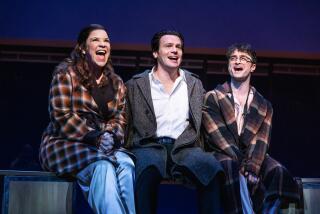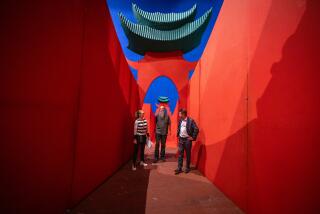‘Tristan’ Perspective
- Share via
In discussing two of the Music Center Opera’s productions of “Tristan und Isolde,” Martin Bernheimer’s review of David Hockney’s sets (“Second Look at Music Center ‘Tristan,’ ” Dec. 21) suffer from the perspective of viewing the proceedings on the stage too closely.
I attended both performances critiqued by Bernheimer, but unlike him, I was sitting in the uppermost balcony for both performances, rows Q and N.
Our differences in viewing the stage are like the different perspectives an art viewer gets when he or she looks at the brush strokes up close or stands back for an overall view.
In this case, Bernheimer saw the brush strokes, while I had the view of the canvas as a whole. From this high vantage point, the materials used were not discernible, and parts of the top and back of the stage were cut off, but from up there, I thought Hockney’s sets complemented Wagner’s musical drama.
The blocks of mass and the open spaces, the placing of the characters and props, the lighting and color schemes (the opening of Act III was beautiful) and the pace at which the changes in action and lighting took place made for a very stimulating night at the opera.
Ideally, of course, one attends an opera for the music and not for the scenery, but today this is not always the case, to which Hockney’s top billing attests. Perhaps I was taken up by Wagner’s music; this was my first live “Tristan” and the music may have tainted my visual sensibilities (my better auditory senses are still in bliss), but I think Hockney’s sets deserved more praise.
MATTHEW L. HETZ
Los Angeles
More to Read
The biggest entertainment stories
Get our big stories about Hollywood, film, television, music, arts, culture and more right in your inbox as soon as they publish.
You may occasionally receive promotional content from the Los Angeles Times.










